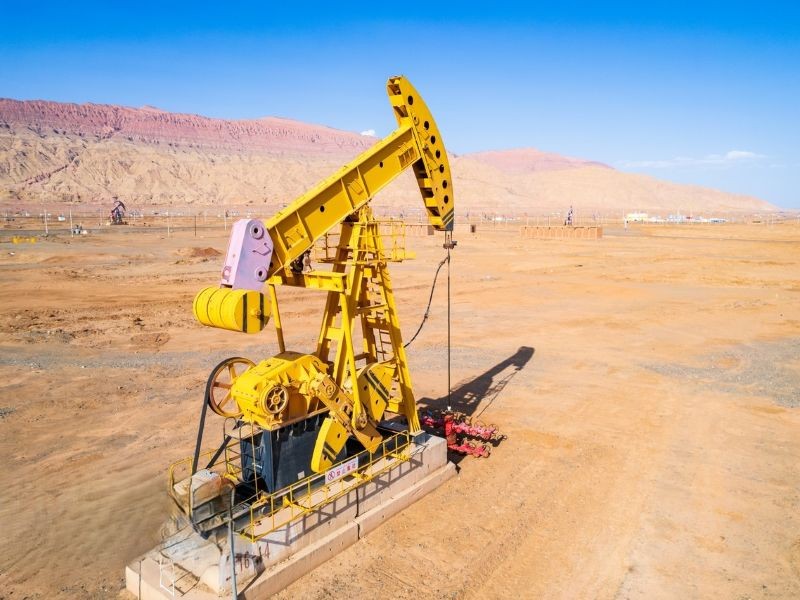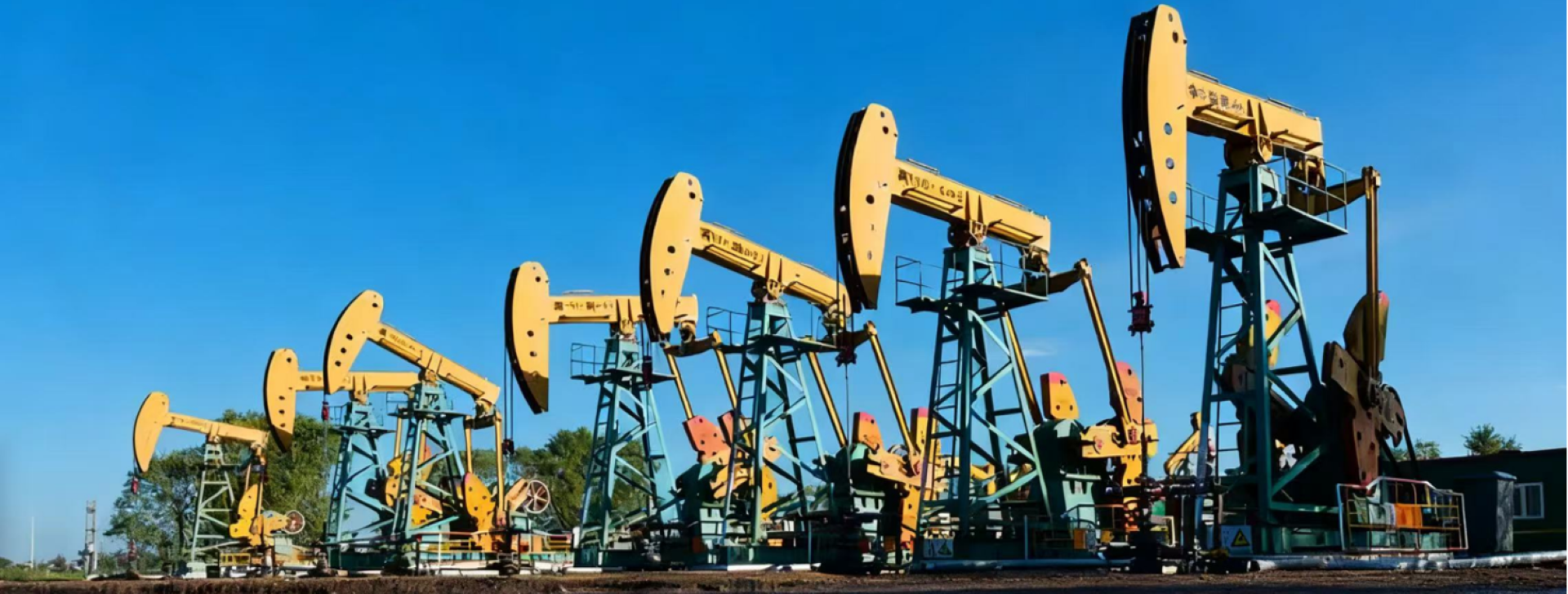In the field of petroleum extraction, deep well pump oil recovery equipment is the core equipment to realize the transportation of underground crude oil to the ground. Among them, the beam—type oil pump-oil pump device has become one of the most widely used types due to its high reliability and strong adaptability. The device is composed of a ground part and an underground part: The ground part contains a pumping unit and a wellhead device for pumping oil wells, while the underground part is composed of a pumping rod, a pumping pump, an oil pipe and other components. In the complete set of equipment, the pumping unit, the pumping rod, and the oil pump are the key cores to realize crude oil extraction. The three work together to form a “three pumping equipment” system to jointly complete the whole process from underground crude oil extraction to ground transportation. Its performance and cooperation efficiency directly determine the production and mining economy of the oil well.
Pumping unit:
As the ground power unit of the “three pumping equipment”, the oil pumping unit assumes the important function of converting electrical energy into mechanical reciprocating motion and providing power for underground oil production. It is a key hub connecting ground energy and underground operations. Through precise cooperation with sucker rods and oil pumps, it continuously extracts underground crude oil to the ground, and is widely used in different types of oil wells such as shallow and medium wells and deep wells.

Ⅰ. Classification:
There are various classification methods for pumping units. The core can be divided according to structural characteristics and balance. Different types are suitable for different oil well working conditions to meet diversified mining needs.
1. Divided by structure:
Traveling beam type oil pump: This is currently the most widely used type, named after the key component of the “traveling beam” in the structure. Its core feature is to drive the head of the donkey to move down through the swing of the beam, and then pull the sucker rod. According to the relative position of the bracket and the crank connecting rod mechanism, it can be subdivided into ordinary type and forward type (front type). The bracket of the ordinary beam pumping unit is located between the donkey head and the crank connecting rod mechanism. The structure is symmetrical and the stability is strong. It is suitable for most conventional oil wells. The crank connecting rod mechanism of the forward beam pumping unit is located between the donkey head and the beam bracket. The fuselage is more compact and covers a small area, especially suitable for areas with limited well site space, such as urban marginal oil fields or intensive well formations.
Beam-free pumping unit: Compared with beam-free pumping unit, beam-free pumping unit eliminates the traditional beam-free structure and realizes power transmission through hydraulic transmission, chain transmission or screw transmission. It has the advantages of small size, light weight and long stroke. Common types include hydraulic pumping units, chain pumping units, screw pumping units, etc., which are suitable for deep wells, ultra-deep wells or heavy oil wells.
2. Divided by balance:
Beam balance type: A balance weight is installed at the tail of the beam to balance the load at the head end of the donkey by adjusting the position and weight of the weight. The structure is simple and easy to maintain, but the balance accuracy is low. It is suitable for low-load, short-stroke oil wells.
Crank balance type: A balance weight is set on the crank to balance the load using the centrifugal force when the crank rotates. The balance effect is more stable and adapts to medium and high load conditions. It is currently the mainstream balance method of beam-type oil pumping unit.
Composite balance type: Combining the advantages of beam balance and crank balance, a balance weight is set on both beam and crank, which can effectively reduce load fluctuations and is suitable for high-load, long-stroke deep wells or high-yield oil wells.
Ⅱ. Working principle:
The essence of the working process of the oil pumping unit is the process of “energy conversion and transmission”. The core is to convert the high-speed rotational movement of the motor output into the low-speed reciprocating movement of the donkey's head through multi stage transmission. It can be divided into three key steps:
1. Power input and deceleration: The motor converts electrical energy into mechanical energy, outputs high-speed rotational movement, and transmits it to the gearbox through the coupling. Multi-stage deceleration is achieved inside the gearbox through a gear set, which reduces the speed to the low speed required by the crank, while amplifying the torque to meet the downhole load requirements.
2. The rotational movement is converted into swing: the output shaft of the gearbox drives the crank to do low-speed rotational movement, and the crank is connected to the rear arm (or forearm) of the beam through a connecting rod. When the crank rotates, the connecting rod pushes or pulls the beam to swing up and down around the fulcrum of the bracket, realizing the transformation of “rotation movement → swing movement”.
3. Reciprocating movement and load transfer: A donkey head is installed at the front end of the beam, and the donkey head is connected to the oil pumping rod through a rope suspender. With the swing of the beam, the donkey head moves up and down synchronously, and the traction sucker rod drives the piston of the underground oil pump to do vertical reciprocating movement, and finally draws the crude oil out of the underground.In this process, the loads such as the weight of the liquid column above the piston, the weight of the sucker rod column, etc. are transmitted to the donkey head through the rope suspender, so the strength design of the donkey head and the beam needs to meet the high-strength load requirements.
Ⅲ. Key technical parameters:
The performance of the pumping unit is reflected through a number of key parameters, which need to be reasonably selected according to factors such as oil well production capacity, well depth, and crude oil physical properties:
Stroke: Refers to the maximum distance from the head of the donkey to the bottom, which directly determines the stroke of the piston of the oil pump. The larger the stroke, the more liquid is pumped in a single time, which is suitable for high-yield oil wells.
Impulse: Refers to the number of times the donkey's head moves up and down per minute. The higher the impulse, the more times the fluid is pumped per unit time, but too high the impulse will increase the risk of fatigue damage to the sucker rod.
Suspension point load: Refers to the maximum load borne by the suspension point of the donkey head, including the weight of the pumping rod, the weight of the liquid column and the additional load, which is the core basis for the strength design of the pumping unit.

Reference materials:
[1] "Petroleum Machinery" Journal, 2022, Volume 50, Issue 3, "Structural Optimization and Application Research of Beam-type Oil Pumping Unit"
[2] Sinopec "Petroleum Exploration and Development" 2023, Volume 50, Issue 2, "Progress in the Application of Non-beam Pumping Units in Deep Well Mining"
[3] "Oil and Gas Field Ground Engineering" Volume 40, Issue 11, 2021 "Research on the Optimization of the Balance Method of Pumping Units and the Improvement of Energy Efficiency"
[4] "Mechanical Design and Manufacturing" No. 8, 2022 "Design and Reliability Analysis of Reducer of Oil Pumping Unit"
[5] "Oil and Gas Well Engineering" Volume 6, Issue 1, 2023 "Research on Parameter Optimization and Capacity Matching of Pumping Unit"

